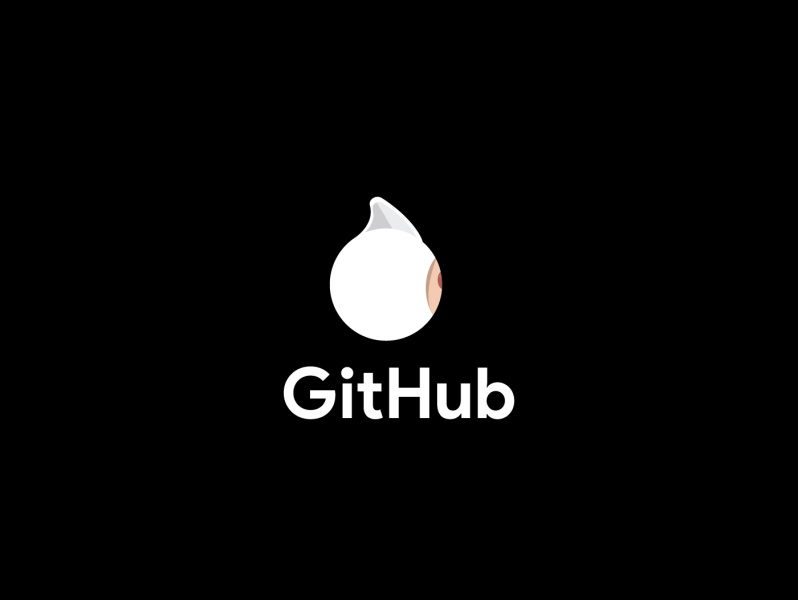clj-bigml
clj-bigml provides Clojure bindings for the BigML.io API.
Installation
clj-bigml is available as a Maven artifact from
Clojars.
For Leiningen:
Overview
BigML offers a REST-style service, BigML.io, for creating and managing BigML resources programmatically. You can use BigML.io for basic supervised and unsupervised machine learning tasks and also to create sophisticated machine learning pipelines.
clj-bigml aims to make it easier to use BigML.io features from
Clojure. BigML.io features are always growing and adapting to BigML
customers' requirements, and clj-bigml currently supports only
a limited subset of those features.
BigML.io takes a white-box approach where it makes sense. This includes the possibility of downloading your datasets, models, clusters and anomaly detectors and use them locally (either as BigML's native JSON format or as PMML) in addition to being able to use them through BigML API.
Please note, all code samples in this document assume that the following namespaces are already required:
(require '[bigml.api [core :as api]
[source :as source]
[dataset :as dataset]
[model :as model]
[cluster :as cluster]
[centroid :as centroid]
[anomaly-detector :as anomaly-detector]
[anomaly-score :as anomaly-score]
[prediction :as prediction]
[evaluation :as evaluation]
[script :as script]])
Authentication
To use this library you'll need an account with BigML, your user name, and your API key.
While new BigML accounts come with some free credits, you may avoid spending your credits by enabling development mode. Development mode allows free access to the API but limits the size of the data you can model (~1 MB limit).
There are three approaches to authentication when using the library. The first, and perhaps easiest, is to set environment variables:
export BIGML_USERNAME=johndoe
export BIGML_API_KEY=0123456789
export BIGML_DEV_MODE=true
If the environment variables are set, you may make calls to the client without specifying the authentication information or the development mode (this next code sample creates a data source, which will be discussed later):
(source/create "some_file.csv")
Alternatively, you can use the with-connection and make-connection:
(api/with-connection (api/make-connection "johndoe" "0123456789" true)
(source/create "some_file.csv"))
Finally, you can add the authentication information and the development mode as parameters when calling client functions:
(source/create "some_file.csv"
:username "johndoe"
:api_key "0123456789"
:dev_mode true)
Resources
The BigML API provides access to a growing number of ML resources, including such resources as sources, datasets, models, etc. For more about them, see the tutorial videos on YouTube.
bigml.api.core provides a set of functions that act as primitives
for all the resource types:
list- Returns a paginated list of the desired resource.create- Creates a resource (although we recommended avoiding this and using the friendlier resource specificcreatefns).update- Updates a resource (usually limited to textual descriptions likename).delete- Deletes a resource.get- Retrieves a resource.get-final- Repeatedly attempts togeta resource until it is finalized.
The other namespaces (bigml.api.source, bigml.api.dataset, …)
offer functions specific to that resource type. At a minimum this
includes resource specific list and create functions which are
more convenient than the generic version.
Sources
Sources represent the raw data that you wish to analyze.
bigml.api.source/create makes it convenient to create sources. It
supports three types of sources and will create the appropriate type
depending on the input to create.
Local sources are created from local files:
(source/create "test/data/iris.csv.gz")
This will upload the file from your computer to BigML. BigML supports multiple formats such as CSVs (with space, tab, comma, or semicolon separators), Excel spreadsheets, iWork Numbers, and Weka's ARFF files.
A variety of compression formats are also supported such as .Z
(Unix-compressed), gz, and bz2.
Remote sources are created from URLs:
(source/create "https://static.bigml.com/csv/iris.csv")
BigML also supports s3, azure, and odata URLs.
Inline sources are created directly from Clojure data:
(source/create [["Make" "Model" "Year" "Weight" "MPG"]
["AMC" "Gremlin" 1970 2648 21]
["AMC" "Matador" 1973 3672 14]
["AMC" "Gremlin" 1975 2914 20]
["Honda" "Civic" 1974 2489 24]
["Honda" "Civic" 1976 1795 33]])
Please note that inline sources support only small-ish amounts of data (~5 MB limit).
Datasets
Datasets represent processed
data ready for modeling. They are created from sources or other
datasets and contain statistical summarizations for each field (or
column) in the data. bigml.api.dataset/create makes dataset
creation convenient.
In this example, from the well known Iris data we create a source, wait for completion, initiate a dataset, and wait for its completion.
(def iris-source
(api/get-final (source/create "https://static.bigml.com/csv/iris.csv")))
(def iris-dataset
(api/get-final (dataset/create iris-source)))
Once we've created a dataset, we can transform it, optionally sampling
or filtering its rows, using the dataset/clone function.
Models
Models are tree-based predictive models built from datasets.
Continuing the Iris example, we now initialize a model and wait for it to complete. Since we don't specify an objective field or input fields when building the model, it will default the objective as the last field (in this case, "species"). The other fields become the default inputs ("sepal length", "sepal width", "petal length" and "petal width").
(def iris-model
(api/get-final (model/create iris-dataset)))
Predictions
Predictions may be generated through the API. Creating a prediction requires a model and a set of inputs. Prediction inputs can be formed two ways. They may either be a map from field-id (assigned by the dataset when it's created) to value, or it may be a list of input values that appear in the same order as they did in the data source.
(def iris-remote-prediction
(prediction/create iris-model [7.6 3.0 6.6 2.1]))
(:prediction iris-remote-prediction)
;; --> {:000004 "Iris-virginica"}
;; Also valid:
;; (prediction/create iris-model {"000000" 7.6
;; "000001" 3.0
;; "000002" 6.6
;; "000003" 2.1})
Alternatively, we can use the model to create a local Clojure fn for making predictions.
(def iris-local-predictor
(prediction/predictor iris-model))
(iris-local-predictor {"000000" 7.6
"000001" 3.0
"000002" 6.6
"000003" 2.1}) ;; --> "Iris-virginica"
(iris-local-predictor [7.6 3.0 6.6 2.1]) ;; --> "Iris-virginica"
The local prediction fn will also accept :details as an optional
parameter. When true the fn will return extra information about the
prediction. This includes the number of training instances that
reached this point in the tree, their objective field distribution,
and the confidence
of the prediction.
(iris-local-predictor [7.6 3.0 6.6 2.1] :details true)
;; --> {:confidence 0.90819,
;; :count 38,
;; :objective_summary {:categories [["Iris-virginica" 38]]},
;; :prediction {:000004 "Iris-virginica"}}
Evaluations
An evaluation of a model on a dataset may be generated through the API.
We continue the Iris example by evaluating our model on its own training data. This is poor form for a data scientist, but it will do as a demonstration.
(def iris-evaluation
(api/get-final (evaluation/create iris-model iris-dataset)))
(:accuracy (:model (:result iris-evaluation)))
;; --> 1
(:confusion_matrix (:model (:result iris-evaluation)))
;; --> [[50 0 0] [0 50 0] [0 0 50]]
We have perfect accuracy and a spotless confusion matrix. But of course, never trust evaluations on training data.
Clusters
A cluster is a set of groups of instances of a dataset that have been automatically classified together according to a distance measure computed using the fields of the dataset. A clustering is an example of unsupervised learning.
(def iris-cluster
(api/get-final (cluster/create iris-dataset)))
Centroids
A centroid represents the center of a cluster and is computed using the mean for each numeric field and the mode for each categorical field. You can create a centroid for a given cluster and a new data instance to identify the cluster's centroid that is closest to the given instance.
(def iris-centroid
(api/get-final (centroid/create iris-cluster {"000000" 7.6
"000001" 3.0
"000002" 6.6
"000003" 2.1})))
Anomaly Detectors
An anomaly detector helps find unusual instances in your data.
(def iris-anomaly-detector
(api/get-final (anomaly-detector/create iris-dataset)))
Anomaly Scores
An anomaly score captures how strange a data point appears to be given an anomaly detector within a 0-1 range. Scores above 0.6 can generally be considered unusual.
(def iris-anomaly-score
(api/get-final (anomaly-score/create iris-anomaly-detector
{"000000" 7.6
"000001" 3.0
"000002" 6.6
"000003" 2.1})))
Alternatively, we can use the detector to create a local Clojure fn for generating scores.
(def iris-local-detector
(anomaly-score/detector iris-anomaly-detector))
(iris-local-detector {"000000" 5.2,
"000001" 3.5,
"000002" 1.5,
"000003" 0.2,
"000004" "Iris-virginica"}) ;; --> 0.6125
(iris-local-detector [5.2 3.5 1.5 0.2 "Iris-virginica"]) ;; --> 0.6125
Scripts
A script is compiled source code written in WhizzML, BigML's custom scripting language for automating Machine Learning workflows.
The source code itself can be provided as a string:
(def simple-script
(api/get-final (script/create "(define n (+ k 1))"
:name "Add one"
:inputs [{:name "k" :type "number" :default 0}]
:outputs [{:name "n" :type "number"}])))
Alternatively, you can provide an input stream from which the source code will be read:
(def simple-script
(api/get-final (script/create (clojure.java.io/input-stream "/path/to/source-code.whizzml")
:name "Add one"
:inputs [{:name "k" :type "number" :default 0}]
:outputs [{:name "n" :type "number"}])))
Clean up resources
If you've been following along in your REPL, you can clean up the artifacts generated in these examples like so:
(mapv api/delete [iris-source iris-dataset iris-model
iris-remote-prediction iris-evaluation
iris-cluster iris-centroid simple-script])
More Examples
See test/bigml/test/api/examples.clj for more examples of the API in
action. We show how to break up a dataset into proper training and
testing sets through sampling options, and we show how to grow and
predict with a random forest.
Support
Please report problems and bugs to our BigML.io issue tracker.
Discussions about language bindings take place in the general BigML mailing list. Or join us in our Campfire chatroom.
License
Copyright (C) 2012-2016 BigML Inc.
Distributed under the Apache License, Version 2.0.


Made with ❤️
to provide resources in various ares.
















